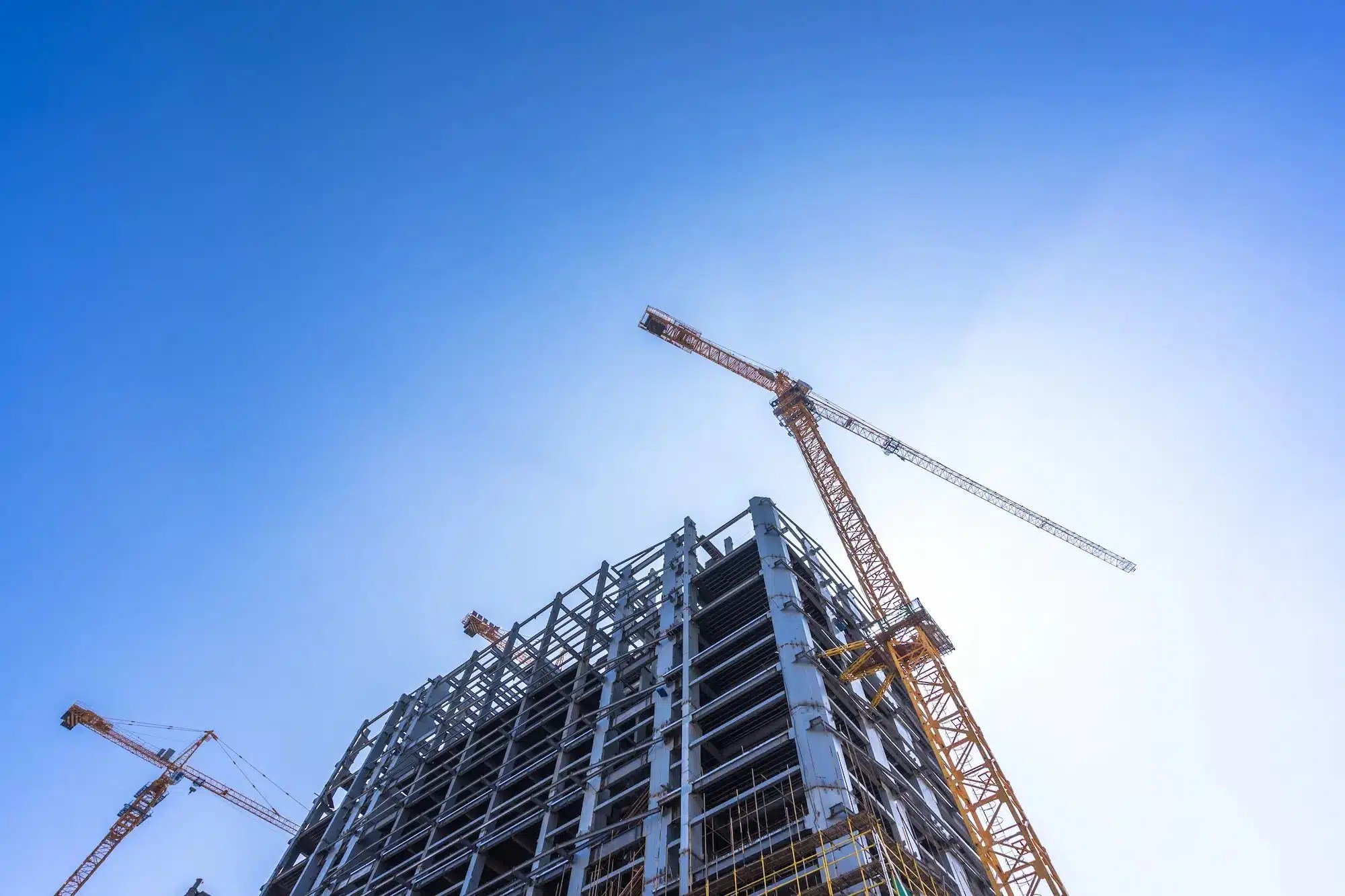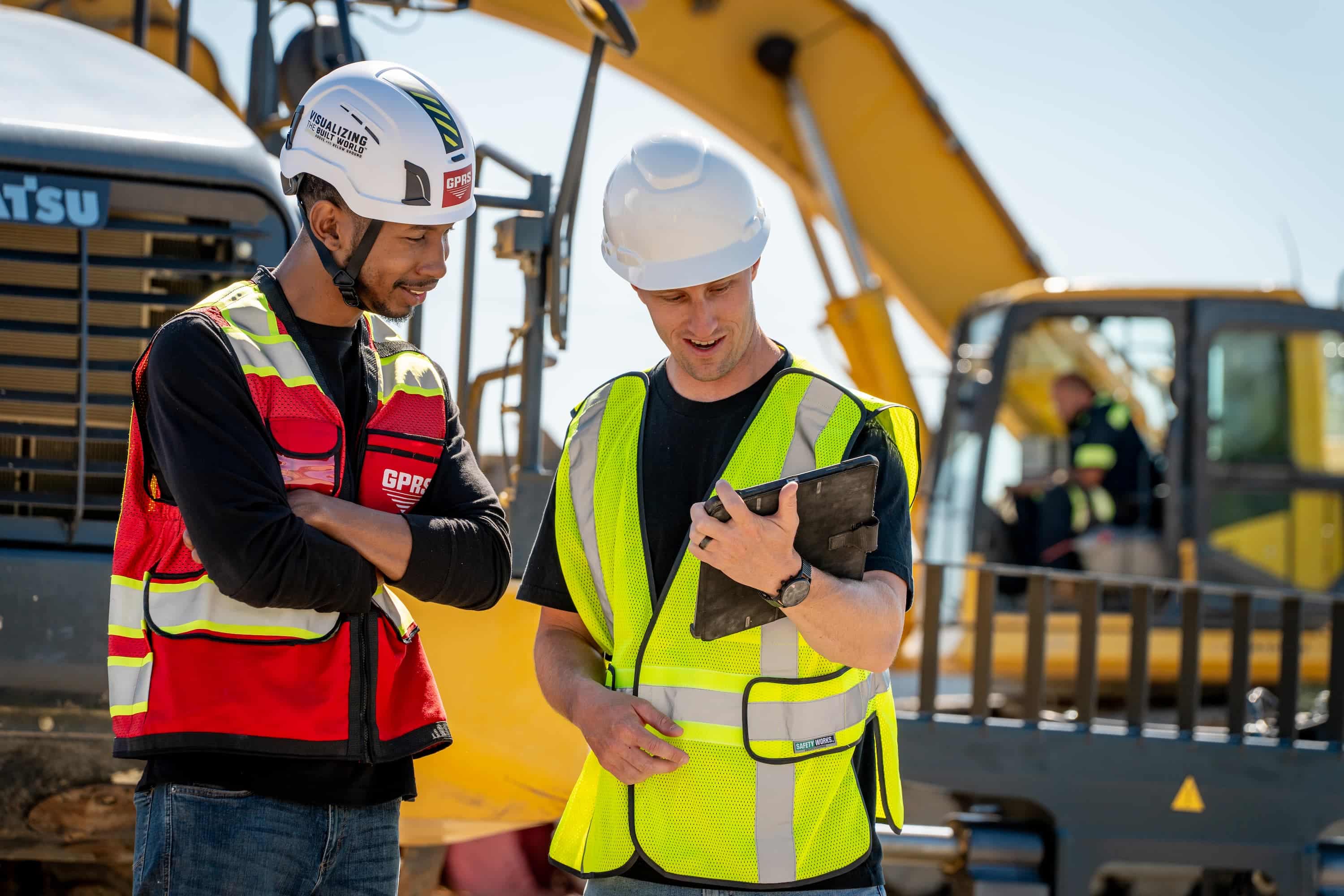We’ve all heard the saying that less is more, and when it comes to construction, that is sometimes the case. Lean construction has made a splash over the last few years, offering a way that some say is better to construct the world around us.
Efficiency and waste reduction are universal goals. Over the years, various methodologies have emerged to streamline processes and minimize resource depletion. Lean Construction offers a philosophy that aims to maximize value and minimize waste throughout the entire building lifecycle. In recent years, the integration of Geographic Information System (GIS) platforms with Lean principles has sparked a revolution in the construction industry. But how exactly does this dynamic duo help reduce waste and boost efficiency?

Understanding Lean Construction
Lean Construction, inspired by the principles of Lean Manufacturing, focuses on delivering maximum value to the customer while minimizing waste. The authors of “The Foundations of Lean Construction” compare the feeling people have when they realize that they’ve grasped reliability to the moment that they learned to ride a bike. Suddenly, they feel a new sense of freedom, and they get a fresh sense of speed and range. Originally developed by the Toyota Production System in the automotive industry, Lean principles have been adapted to various sectors, including construction. At its core, Lean Construction emphasizes collaborative planning, continuous improvement, and the elimination of non-value-added activities.
In Lean construction, the focus switches from individual stakeholders focused only on their individual roles and tasks, to all stakeholders working as a team toward a complete goal. When applying even some of the Lean Construction principles, a project takes on extra dimensions as participants consider its entire life cycle.
The History of Lean Construction
The term Lean Construction was coined by the International Group for Lean Construction (IDLC) upon its founding in 1993. Used in this exact context, “construction” includes the entire industry and not the phase during which physical building takes place. Because of this contextual fact, Lean Construction involves even architects, designers, engineering, constructors, and suppliers, and others working in a field or task which the principles could apply.
In 1997, Glenn Ballard and Greg Howell started the Lean Construction Institute in an effort to develop and share information while working toward improving the management of construction projects. Through plenty of research and data analysis, it was found that only a little more than half of the assignments made by foremen which were supposed to be completed in a week were completed on time. Historically, the focus of improvement has been productivity on a worker level. However, Ballard and Howell felt that this approach to project management missed the root causes and resulted in an unpredictable workflow.
This led to the idea that the construction industry faced many similar challenges that were seen in the manufacturing sector. They then began to implement many of the principles of the Toyota Production System and Lean production methodologies and adapt them for use in construction.

Key principles of Lean Construction Include
Much like lean manufacturing, the art of Lean Construction seeks to create production systems that minimize the waste of time, materials and even efforts in an attempt to produce the most value for the customer, while using the least amount of resources. There are many key principles and concepts, including, but not limited to:
Value Stream Mapping: Identifying and optimizing the very sequence of activities that can and will deliver value to the customer
Last Planner System: Enhancing coordination among project participants to ensure reliable workflow, without interruption, and minimal stutter
Pull Planning: Scheduling activities based on actual project demand rather than just the forecasts
Kaizen: Continuous improvement through small, incremental changes
5S – A disciplined approach to maintaining order in the workplace. The 5S words are Sort, Set in Order, Shine/Sweep, Standardize and Self-Discipline/Sustain
Choosing by Advantages (CBA) – CBA is a tested and effective sound decision-making system developed by Jim Suhr in 1999. This is used for determining the best decision by looking at the advantages of each option
First-run Study (FRS) – This is a trial execution of a process in order to determine the best means, methods, sequencing, and so on. FR studies are done at least a few weeks ahead of the scheduled execution of the process
Five Big Ideas – A set of organizing concepts that support Lean Project Delivery
Gemba – A Japanese term for where value is added or where the work takes place. Lean experts encourage “going to the gemba” to see where there is opportunity to eliminate or reduce waste
Kanban – A Japanese term meaning “a signboard.” The signal tells workers to pull parts or refill material to a certain quantity used in production
Mura – Japanese word for “Unevenness” – fluctuation in demand that causes the workflow to be uneven
There are many other terms associated with lean principles and philosophy. These terms may also be applied to other avenues of production and also of life itself.
Lean Construction works, and may be ushering the industry into an era of sustainability and frugality. When you’re able to do more with less, you’re able to strip away the extras that in turn also slow your team down. A 2018 study found that companies using the most effective lean methods completed 45% of projects early and delivered 70% of them under budget.
The Role of GIS in Lean Construction

GIS technology has rapidly evolved beyond its traditional use in mapping and spatial analysis to become an indispensable tool in Lean Construction. GIS platforms integrate geographical data with project management processes, facilitating better decision-making, reducing inefficiencies, and enhancing overall project outcomes. GIS alone operates with leanness in mind, as it uses less physical resources than traditional mapping and information systems would.
Waste Reduction Through Spatial Analysis
GIS enables construction teams to analyze spatial data such as topography, environmental conditions, and existing infrastructure. By overlaying this information with project plans, teams can identify potential sources of waste and inefficiency early in the planning stages. For example, GIS can highlight areas prone to material waste due to difficult terrain or areas where transportation routes may be inefficient. SiteMap® (patent pending), powered by GPRS, offers these capabilities in perfect detail, with maximum ease of use.
Improved Collaboration and Communication
Effective communication and collaboration are critical to Lean Construction success. GIS platforms provide a centralized system where all stakeholders—architects, engineers, contractors, and clients—can access and share real-time data and project information. This transparency fosters collaboration, reduces misunderstandings, and accelerates decision-making processes, ultimately minimizing delays and cost overruns.
Enhancing Workflow Efficiency
GIS plays a pivotal role in optimizing workflow efficiency by providing spatial insights that inform project sequencing and resource allocation. For instance, GIS can help determine the most efficient routes for equipment and materials delivery, reducing travel time and fuel consumption. Moreover, real-time data updates allow project managers to promptly address issues and adapt plans as needed, ensuring smooth project progression.
Sustainability and Environmental Impact
Incorporating GIS into Lean Construction practices contributes to sustainability efforts by minimizing environmental impact. GIS helps assess the ecological footprint of construction activities, enabling proactive measures to protect sensitive habitats and conserve natural resources. By optimizing transportation routes and reducing material waste, GIS supports sustainable construction practices aligned with environmental stewardship principles. When you know where things are, and where the issues lie, you’re able to better contain them and maintain them, helping reduce environmental impact. SiteMap® is backed by the 99.8% accuracy of GPRS utility locates, meaning your data isn’t just easy to access, but it’s also accurate as well. Greater accuracy leads to greater sustainability.
Implementing GIS in Lean Construction: Challenges and Considerations

While the benefits of integrating GIS with Lean Construction are substantial, implementation can present challenges that require careful consideration:
Data Integration: Ensuring compatibility and seamless integration of various data sources (e.g., CAD drawings, survey data, environmental data) into the GIS platform. SiteMap® makes it easy to integrate lean construction practices, as well as a wide variety of data sources. With SiteMap®, your as builts, survey data, environmental data, CAD drawings, aggregated maps, and much more can easily be stored, searched, and shared with anyone who needs them.
Skill Development: Most integrations would require adequate training to construction teams on GIS software and spatial analysis techniques. With SiteMap®, training isn’t required, as the platform is made with ease of use in mind. Anyone is able to use SiteMap®, even those who have no experience or training.
Cost Considerations: Traditionally, initial setup costs and ongoing maintenance of GIS infrastructure may pose financial challenges for some construction firms. However, with SiteMap®, even financial challenges can be lean. While there may be some upfront costs, the amount of money saved thanks to fewer accidents, greater efficiency, fewer resources needed, and other aspects of integrating a platform like SiteMap® to help guide your lean construction endeavors is endless.
Addressing these challenges requires commitment from project stakeholders and your team, as well as a strategic approach to technology adoption. Investing in innovative and comprehensive GIS solutions tailored to construction industry needs can yield long-term benefits in terms of efficiency gains, cost savings, and improved project outcomes.
The construction industry sees nearly 800 deaths and thousands of injuries per year. The philosophy of Lean Construction as well as the talented and dedicated members of LCI is focused on doing more with less, resulting in less death, less injury, and more productivity and results. GPRS and SiteMap® offer services and technology that support a lean construction philosophy, helping you visualize your world as you build it.
The integration of GIS platforms with Lean Construction principles marks a significant union that allows these principles to take on greater meaning and new form. By leveraging spatial data analytics, enhanced collaboration, and streamlined workflows, GIS empowers construction firms to achieve greater efficiency, reduce waste, and uphold sustainability objectives. By embracing GIS in Lean Construction, there is hope and promise to reshape project delivery methods, setting new benchmarks for innovation and excellence in the built environment.
As construction projects become increasingly complex and global demand for sustainable practices becomes not just a want, but a very serious need, SiteMap® and GPRS are helping to drive a revolution that promises a more efficient and collaborative future for the construction industry and beyond. Do more with less, do more with SiteMap® and GPRS.
Contact us today to learn more about how we can support your lean construction projects.
